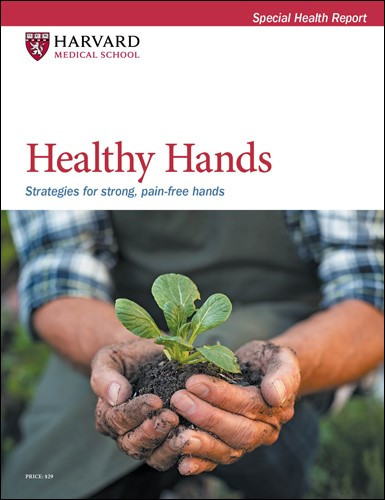Best treatments for this common finger problem
Dupuytren's contracture is treated with needle-based or surgical procedures.
- Reviewed by Anthony L. Komaroff, MD, Editor in Chief, Harvard Health Letter; Editorial Advisory Board Member, Harvard Health Publishing

Your grip is slowly eroding in one hand, the result of your ring or pinky finger gradually bending toward your palm, so that you can't lay your hand flat on a tabletop. Now this crippling change is making it harder to shake hands, grasp objects, type on a keyboard, get dressed, and more. It's a problem called Dupuytren's contracture. Fortunately, several fixes can help straighten your finger again.
What is Dupuytren's?
Dupuytren's (pronounced "DOOPA-trenz" in the United States) is believed to be a genetic condition. "It develops when a thick tissue called collagen builds up between the skin of the palm and the tendons that move the fingers. The collagen forms lumps and cordlike structures that tug on the tendons and pull the fingers toward the palm," says Dr. Abhiram Bhashyam, a hand and arm surgeon at Harvard-affiliated Massachusetts General Hospital.
While Dupuytren's most often involves the ring or pinky fingers, it can occur anywhere in your palm, and tug on any finger. "In the early stages, Dupuytren's starts to pull the finger down. Sometimes, it then gets slowly worse. In later stages, it's pulled down so far that you can't even open your hand, and it creates a quality-of-life problem," Dr. Bhashyam says.
Early-stage approaches
If you discover a thickening in your palm and suspect Dupuytren's, but it's not interfering with your ability to do anything that's important to you, you probably don't need to do anything about it, though it can be helpful to see a hand surgeon. "If the thickening is just a lump, and it's not interfering with your life, we just watch it to make sure it doesn't get worse. We'll have you monitor it at home," Dr. Bhashyam says.
He recommends a simple test: "On the first of every month, put your hand flat on a table. If you can do that, there's no treatment that will make you better," Dr. Bhashyam says. "If you can't put your hand flat on a table, you'll need to see a hand surgeon."
Later-stage approaches
For the later stage of Dupuytren's, doctors can choose from three treatments. Each one targets the thick collagen tissue, freeing the tendons so that the fingers can straighten out. Medicare covers each one.
Needle aponeurotomy. For this in-office treatment, also called percutaneous needle fasciotomy, the doctor uses a needle to break up the collagen tissue.
Collagenase injection. This is also an in-office treatment. Doctors inject an enzyme called collagenase into the hand. The enzyme dissolves the collagen tissue.
For either a collagenase injection or a needle aponeurotomy, recovery involves wearing a splint at night for about four weeks to keep the finger straight, and four to six weeks of hand therapy.
Surgery. You'll have to go to a surgery center for this procedure. While you're under anesthesia, the surgeon will make an incision in your hand and remove the collagen tissue. For a week or two after surgery, you'll have to wear a splint day and night. After that, you'll wear the splint at night only, for about a month. You'll also need six to eight weeks of hand therapy.
Recurrence
Regardless of which treatment you have, the condition can return. Dr. Bhashyam says that five years after treatment, Dupuytren's recurs about 20% of the time after needle aponeurotomy, 10% of the time after surgery, and somewhere in between after a collagenase injection.
What happens then? "If you've had a needle aponeurotomy or a collagenase injection, then surgery is the most common treatment," Dr. Bhashyam says. "If you already had surgery, reoperation is possible, but more challenging for the surgeon."
Which procedure is best?
An in-office procedure is obviously less involved than surgery. But the treatment choice primarily depends on the severity of your condition (severe cases usually require surgery) and the location of the collagen tissue. "If it's near certain arteries and nerves in the hand, I'll recommend surgery because I can better visualize them, with less risk of damaging them compared to an in-office procedure," Dr. Bhashyam says.
If the thick tissue is clear of those arteries and nerves, Dr, Bhashyam often recommends trying the collagenase injection first. "Either the injection or a surgical procedure can help restore your quality of life."
Image: © Kateryna Kon/Science Photo Library/Getty Images
About the Author

Heidi Godman, Executive Editor, Harvard Health Letter
About the Reviewer

Anthony L. Komaroff, MD, Editor in Chief, Harvard Health Letter; Editorial Advisory Board Member, Harvard Health Publishing
Disclaimer:
As a service to our readers, Harvard Health Publishing provides access to our library of archived content. Please note the date of last review or update on all articles.
No content on this site, regardless of date, should ever be used as a substitute for direct medical advice from your doctor or other qualified clinician.
















